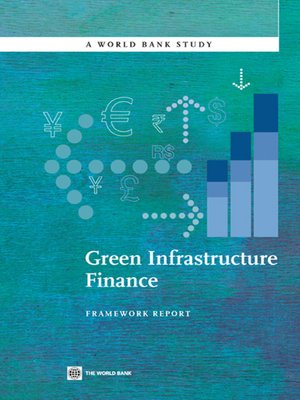
Sign up to save your library
With an OverDrive account, you can save your favorite libraries for at-a-glance information about availability. Find out more about OverDrive accounts.
Find this title in Libby, the library reading app by OverDrive.



Search for a digital library with this title
Title found at these libraries:
| Library Name | Distance |
|---|---|
| Loading... |
This report builds on the conclusions of the Green Infrastructure Finance: Leading Initiatives and Research report and lays out a simple and elegant way in which scarce public financing can leverage market interest in 'greening' infrastructure, particularly in the East Asia and Pacific Region. The framework introduced in the report bridges ideas and concepts between environmental economics and project finance practices and consists largely of an analytical methodology for determining the financial viability gap of low-emission projects and an approach for assessing and strengthening the green investment climate in a given country environment.
The authors argue that the solution to the financing challenge of low-emission investments lies in understanding the causes of a given project's financial viability gap, and then investigating how specific actions, including concessional financing, strategic subsidies and other public policy interventions and reforms, can be deployed in a complementary fashion to close the gap.
The approach provides suggestions for appropriately allocating risks and responsibilities to various stakeholders for financing portions of the financial viability gap and recommends using multiple instruments and tools to make green investments viable. Governments, for example, could rebalance their own policy distortions with a mix of domestic instruments such as feed-in tariffs, direct subsidies, domestic carbon taxes, and other financing and fiscal incentives. The international community could contribute international instruments for monetizing the global externality benefits of green investments through concessional financing and direct grants. Such an approach results in hybrid financing structures designed to maximize the leveraging effect of public interventions.







